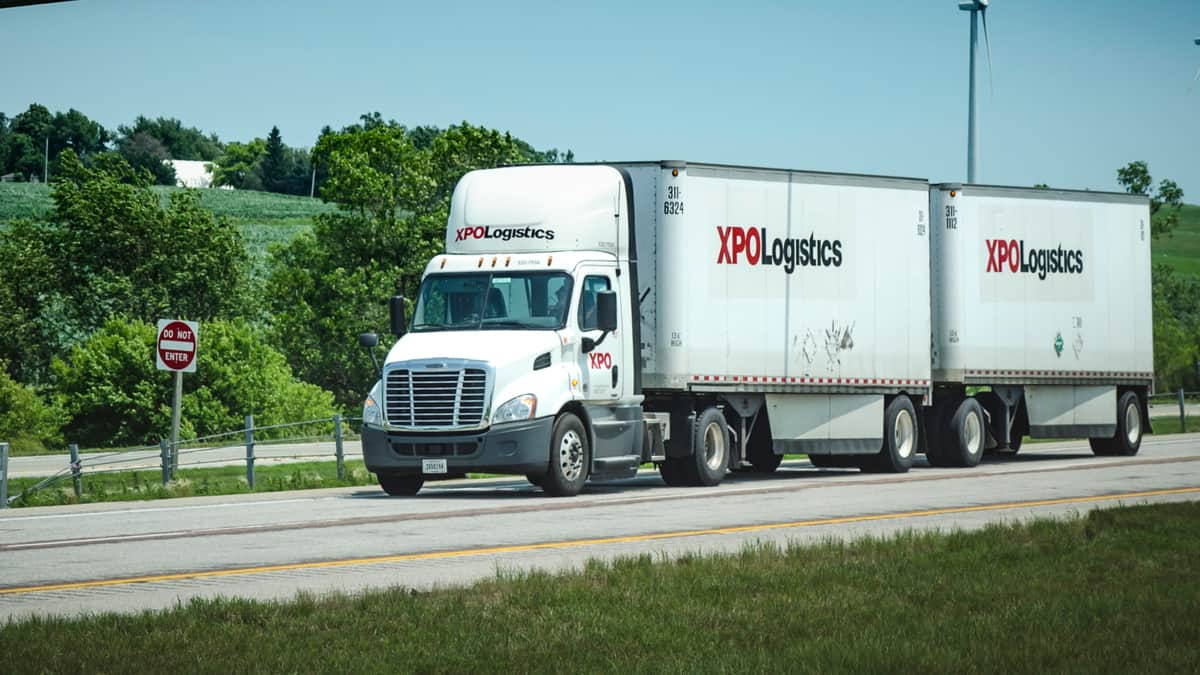This probably wasn’t the way Brad Jacobs wanted to start the show.
In its first reporting quarter since spinning off its logistics business in August to become a transportation-centric company, XPO Logistics Inc. delivered profit results late Tuesday that Jacobs, XPO’s chairman and CEO, called “mixed” but which analysts and investors might call disappointing.
XPO’s (NYSE:XPO) North American freight brokerage division killed it in the quarter, delivering 62% year-on-year gains in gross and net revenue, and a 37% increase in daily load count. Its performance was instrumental in the Greenwich, Connecticut-based company posting record quarterly revenues and beating adjusted diluted earnings-per-share estimates by a penny at 94 cents a share.
But the North American LTL segment, which accounts for roughly two-thirds of the reconstituted company’s profits, hit a rough patch. Operating income fell $21 million year-over-year to $149 million. Operating ratio, the ratio of revenues to expenses and a key metric of operating efficiency, increased on an adjusted basis by more than 4 percentage points to 83.9%. A rising ratio is a negative trend because it means a company is spending more for each dollar in revenue.
LTL yields, excluding fuel, rose 6%, a record level that company executives said would have been higher if the segment had moved quicker to raise prices. Revenue excluding fuel surcharges increased 9.6% to $904 million. Fuel surcharge revenue, riding the tailwind of soaring oil and diesel prices, rose 54.6% to $167 million.
Companies across America got hit by surging cost inflation last quarter, and XPO was no exception. Seven of its eight cost lines reported year-on-year increases. The lone exception was “transaction and integration” costs where no activity was reported in either the 2021 or 2020 quarters.
The line item the company and analysts chose to focus on was the cost of third-party or “purchased” transportation, which rose more than 39% year-on-year to $124 million. Most of the additional purchased transport expense went to paying higher rates to truckload carriers that were needed to augment XPO’s LTL line-haul service. But the real problem was one of timing.
XPO has slowly insourced its linehaul operations for years. It reduced third-party linehaul to 24% of miles driven last quarter, compared with 26% in the second quarter. However, its third-quarter efforts collided with a very turbulent market for labor and equipment availability. Executing the transition during such a volatile period led to network inefficiencies, higher costs to meet delivery requirements and an unwelcome direction in operating ratio. The status quo will likely extend into the current quarter and perhaps part of the first quarter of 2022 before the situation improves sometime in the spring, company executives said.
The company will adopt a more balanced approach to insourced and purchased transportation, and will choose outsourcing on lanes where the pricing is attractive to do so, said Mario Harik, XPO’s longtime CIO who is also interim LTL head. The segment currently has about 15% excess terminal capacity nationwide, but it is not evenly distributed, Harik said. As a result, capacity in some areas of the country are very tight, while in others it’s loose, he said.
Jacobs isn’t one to publicly sugarcoat setbacks, and he stayed true to form on Wednesday morning’s analysts call. “It was not our finest hour,” he said, referring to the LTL segment’s results. “Even great companies stumble every now and then,” he added.
Since the spinoff, Jacobs has preached patience with XPO’s evolution. Though Jacobs said there is a long way to go, he noted that the company repaid $1.7 billion in debt last quarter to move closer to attaining investment-grade status. However, the message was lost on impatient analysts and investors accustomed to the company’s quarterly successes over the past decade. In late trading on Wednesday, XPO shares were down slightly more than 7.1% to $80.57 a share, though off their worst levels of the day. Whether ironic, symbolic (or possibly irrelevant), the market capitalization of the spun-off company, GXO Logistics Inc. (NYSE:GXO), is nearly $1 billion higher than XPO’s.
To counter the erosion in LTL margins, XPO unveiled a multipronged plan that includes pulling forward a 5.9% general rate increase from January to November (on top of what is believed to be an 8% bump in contract renewals), expanding its LTL trailer production to double its trailer capacity during 2022, doubling the graduates of its driving school to 1,600 next year, adding 900 doors nationwide over the next one to two years, increasing accessorial charges on detained trailers, oversized freight and shipments that require special handling, and imposing “selective” traffic embargoes to improve network fluidity and boost yield, perhaps at the expense of volume. Boosting the segment’s top-line growth is also a priority, Jacobs said.
There hasn’t been much customer resistance to these moves, Harik said. The multinational businesses that are the core of XPO’s customer base are well aware of the environment of higher costs and tight supply that the company operates in today, he said.
XPO is sticking to its goal of the LTL segment hitting $1 billion in adjusted earnings before interest, taxes, depreciation and amortization (EBITDA) during 2022. However, company executives acknowledged that they must execute the multi-pronged plan to hit that target.











